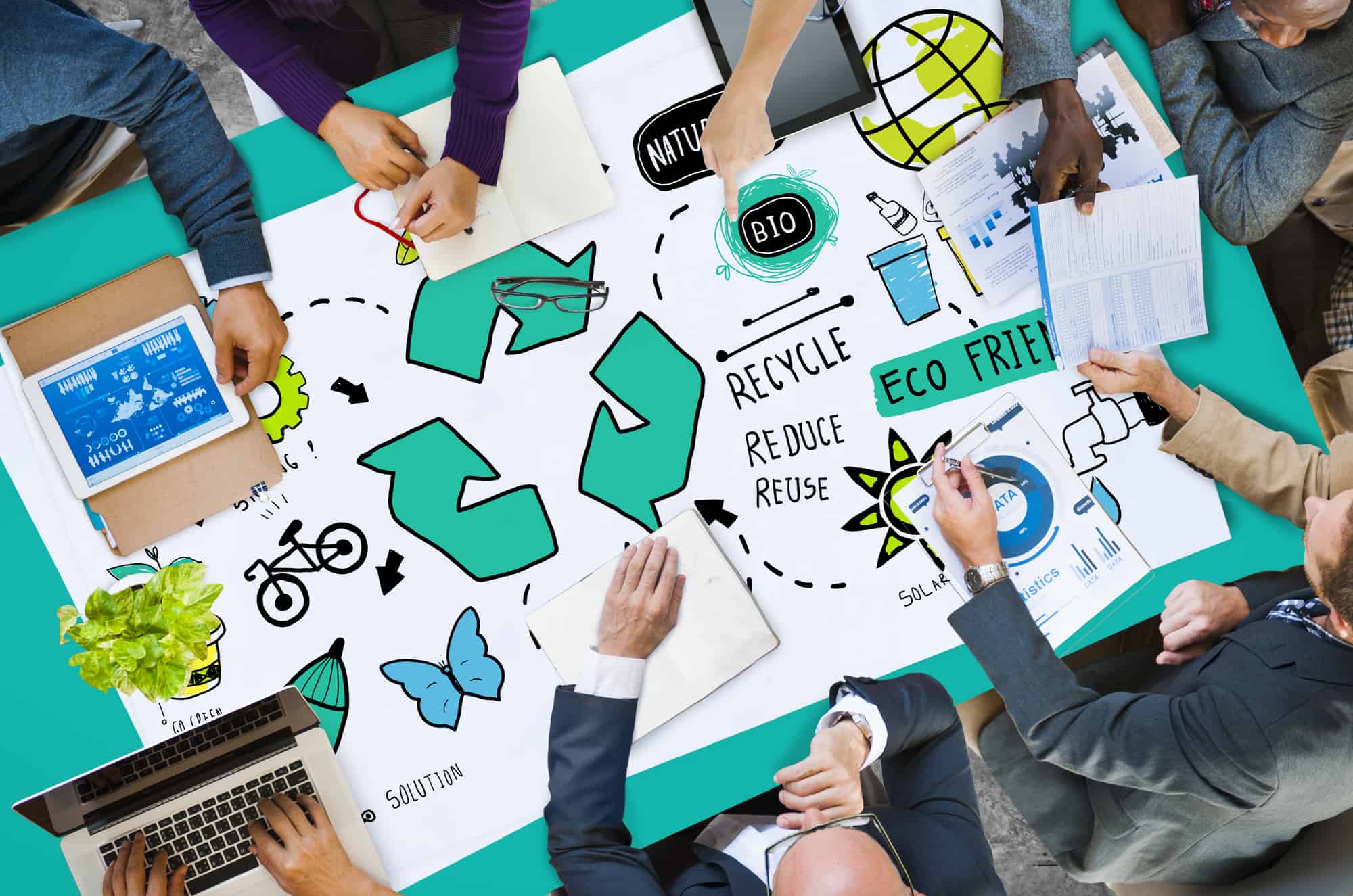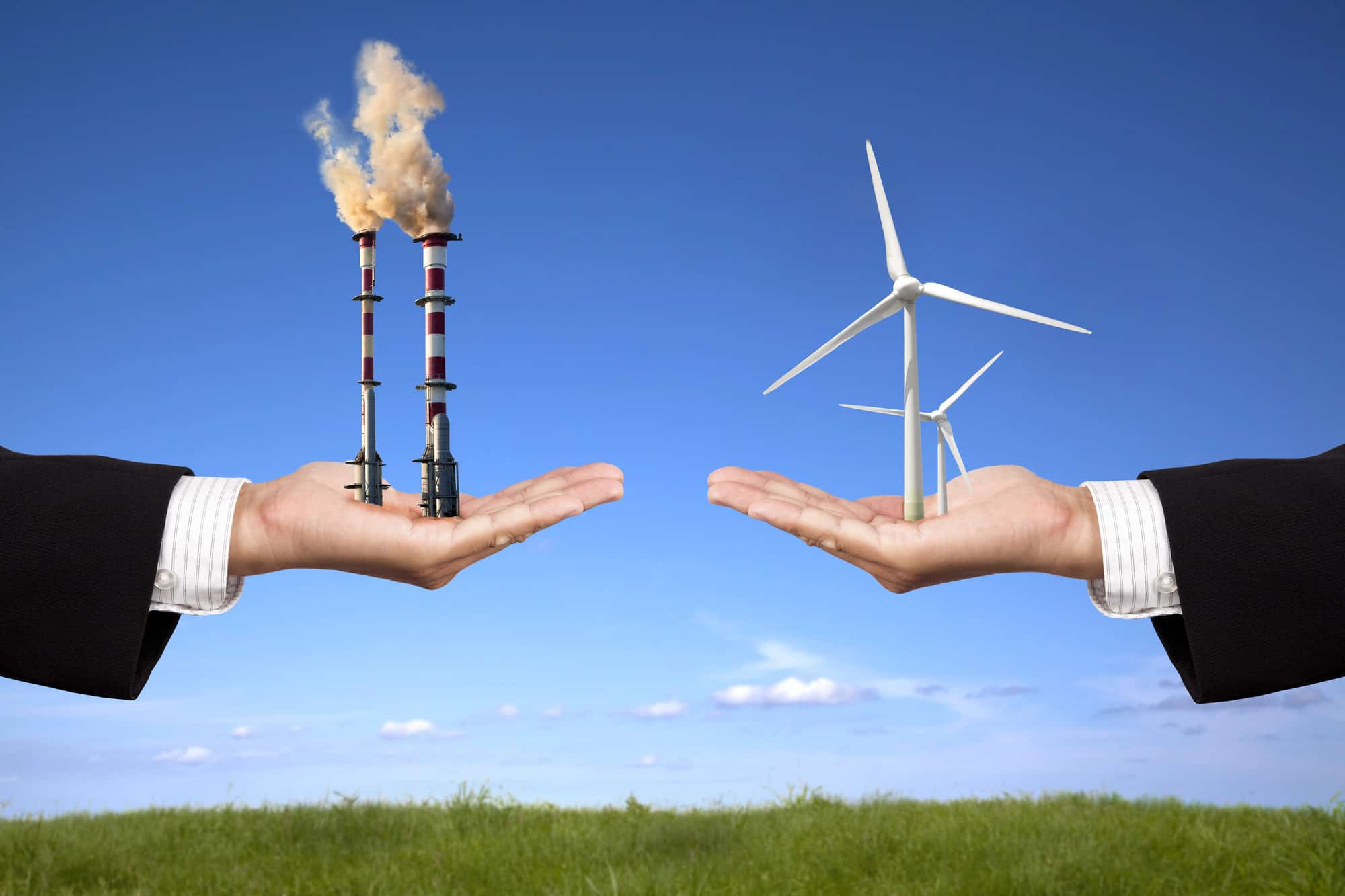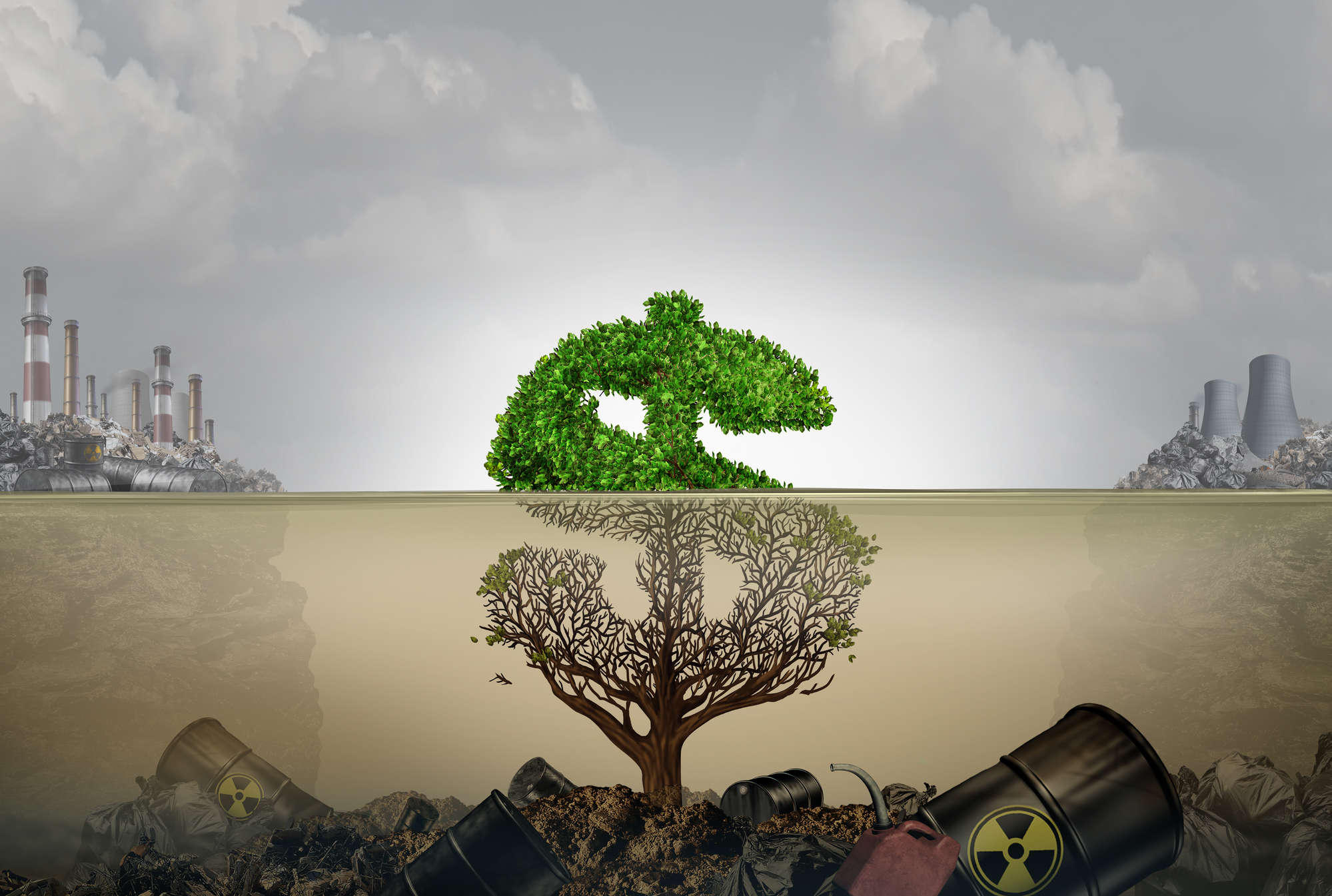Dive into how environmental factors shape business success. Explore real-world cases and strategies for a sustainable future.
Today, we're going to dive into something fascinating. Trust me, it's super relevant to the world of business as we know it.
We're talking about PESTLE analysis, but before you yawn and think, "Not another acronym!" Let me tell you, this one's a game changer, especially when we zoom into the 'E' part—yep, Environmental factors.
So, why are we even talking about this?
Well, in today's world, businesses are like ships navigating the vast ocean of the market. They encounter storms, calm seas, and sometimes unpredictable weather.
These environmental factors are our metaphorical weather conditions in the business landscape. They can shake things up, and we need to understand them. That's our compass and map rolled into one.
PESTEL analysis is a framework helping businesses scan the horizon for these conditions. It stands for Political, Economic, Social, Technological, Legal, and Environmental factors.
While each component is crucial, there's something compelling about the Environmental aspect. This part of the PESTLE analysis is capturing the attention of businesses far and wide.
Why, you ask?
Because, my friends, the environment impacts everything.
From how we do business to what consumers want and even the future of our planet. And no, it's not about being "green" for the sake of it. It's about understanding the big picture. It's about adapting, and thriving in a world that's changing all the time.
Our goal here is simple but ambitious. We're going to unpack the 'E' of PESTLE. We're revealing the core environmental factors reshaping the business world.
From climate change to sustainability, regulations to technological innovations, we're covering it all. And trust me, it's going to be a ride packed with insights and real-world examples. And we might run into a few surprises along the way.
So, let's explore together how to interpret these environmental factors. After all, it is about survival and thriving in the ever-evolving business landscape. Ready? Let's dive in!

Understanding Environmental Factors in Business
Let's get into the nitty-gritty of what we mean by environmental factors in the world of business.
Imagine you're setting up a lemonade stand. You've got your lemons, sugar, water, and a sunny spot picked out.
But then, bam! A rainstorm hits. Or maybe it's just way too hot, and no one's stepping outside. Suddenly, your lemonade stand's success isn't just about how good your recipe is. It's also about the weather, right?
Now imagine these environmental factors affecting real businesses. We're scaling up this concept to a whole new level.
It's not just about the weather (though climate change is a huge part of it). It's about all the external environmental elements that can impact a business. From its operation to its growth and strategy. This includes the physical climate obviously. But it also includes sustainability practices and availability of natural resources. Let's not forget the shift towards greener, more sustainable ways of doing business.
Now, you might wonder, "Why has this become such a big deal now?"
The answer is pretty straightforward but also a bit complex. Our world is changing – fast.
Climate change is making the weather more unpredictable. Natural resources are becoming harder to come by. And consumers are becoming more environmentally conscious. They care about where their products come from and the impact their purchases have on the planet.
Businesses aren't passive players in this scenario. They're at the forefront. They are both contributors to environmental challenges and key figures in driving change.
This shift towards environmental awareness isn't a moral or ethical consideration. It's a strategic one, too. Some companies understand and adapt to these environmental factors. They are the ones that carve out a competitive edge in an increasingly conscious market.
Moreover, this evolution in business practices is not happening in a vacuum.
Governments and regulatory bodies worldwide are stepping up. They are implementing policies that encourage, or sometimes enforce, more sustainable business operations.
Business innovation, consumer demand, and regulatory frameworks interact to create a dynamic environment. Understanding these factors is not only beneficial but essential for survival and success.
Environmental factors in business are external conditions. These conditions influence how companies operate, innovate, and provide value to their customers. These factors are becoming increasingly important in decision-making processes. They are important for their immediate impact on operations. They are equally important for their long-term implications on sustainability, reputation, and profitability.
So, as we move forward, remember our lemonade stand. The principles haven't changed; the scale and stakes just got bigger.
Understanding these environmental factors is about tackling challenges. Seizing opportunities to make a positive impact to thrive in tomorrow's business landscape. Ready to explore further? Let's keep going!
What are the environmental factors that affect business?
We're now stepping into the heart of our journey. The key environmental factors that are reshaping the business world.
This is where we see the real impact of those external factors on businesses, big and small. So, let's break it down and explore each of these factors more closely.
Climate Change and Its Impact
First up, climate change. It's not just a buzzword; it's a reality that's affecting businesses in many ways.
Extreme weather events disrupt supply chains. Shifts in consumer behavior favor eco-friendly products, and climate change is pushing businesses to rethink their operations.
For instance, a ski resort may face challenges due to shorter winter seasons. Meanwhile, an agriculture-based business might struggle with unpredictable rainfall patterns. The key here is adaptability. Businesses that can pivot and solve these challenges will stay ahead.
Sustainability and Corporate Responsibility
Next, we dive into sustainability and corporate responsibility. It's all about how businesses manage their impact on the environment. Like reducing waste and using sustainable materials to investing in green technologies.
Companies are increasingly realizing that being environmentally conscious can also be economically beneficial. Consumers are more likely to support brands that align with their values. Sustainability is a big part of that equation. Plus, adopting sustainable practices can lead to cost savings in the long run. In that scenario, resources are used more efficiently.
Regulation and Policy
Regulations and policies are another critical factor.
Governments around the world are implementing laws and guidelines to protect the environment. Businesses need to comply.
This can include regulations on emissions and waste management. They can also include the use of certain materials. While navigating these regulations can be challenging, there's a silver lining. Companies that are proactive in compliance can often find new opportunities for innovation. An example is developing eco-friendly alternatives to traditional products or processes.
Natural Resources and Their Limitations
The availability and management of natural resources are crucial. Businesses depend on these resources, whether it's water, minerals, or energy sources.
But many of these resources are finite. Their extraction and use can have significant environmental impacts. This has led to an increased focus on resource efficiency – doing more with less.
Businesses are exploring ways to reduce their reliance on non-renewable resources. They are opting for renewable sources. And they are finding ways to recycle and reuse materials.
Technological Advances in Environmental Management
Lastly, let's talk technology.
Technological advances are helping businesses reduce their environmental footprint in ways that were unimaginable a few decades ago.
Renewable energy technologies like solar and wind power come to mind. Next, think of innovations in recycling and waste management.
Technology is at the forefront of the environmental movement in business.
It's not just about mitigation, either. Technology is opening up new business models and opportunities, like the sharing economy. This reduces waste by making it easier for people to share and reuse resources.
So, there you have it. A rundown of the key environmental factors affecting businesses today.
Each of these factors presents its own set of challenges but also opportunities. Businesses navigating this landscape effectively are contributing to a more sustainable future. They're also building a strong foundation for long-term success.
The message is clear.
Integrating these environmental considerations into your business strategy is good for the planet. It's also good for business.
Now, let's look at how some companies are turning these challenges into opportunities. Our next section focuses on case studies and real-world applications.

Examples of Environmental Factors Affecting Real-world Businesses
Alright, let's apply all this theory to the real world and see how it plays out. It's one thing to discuss environmental factors and their importance, but it's another to see them in action.
This part of our journey focuses on case studies and real-world applications. It showcases businesses that have navigated environmental challenges and thrived because of their strategies. These stories aren't just inspiring; they're blueprints for what's possible.
Patagonia: Championing Sustainability
First up, let's talk about Patagonia, the outdoor clothing and gear company.
Patagonia has long been a pioneer in sustainability. They are integrating environmental consciousness into every aspect of its business. They are sourcing organic cotton and are implementing a repair-and-reuse program. Patagonia has set a high standard for what it means to be a responsible business in today's world.
They've also been transparent about their supply chain and environmental impact. They are encouraging consumers to buy less and consider the longevity of their purchases. The result? A loyal customer base and a brand that's synonymous with environmental stewardship.
IKEA: Leading in Renewable Energy and Sustainability
IKEA, the global furniture giant, has also made significant strides in environmental management. They are committed to becoming a circular business by 2030. They emphasize on renewable energy, sustainable materials, and product life extension. Their strategy showcases how large corporations can lead in the environmental space.
IKEA has invested in wind and solar farms. It aims to produce as much renewable energy as it consumes in its operations. It's also exploring new ways to design products that can be repaired, reused, recycled, or resold. In a way, it is transforming the way we think about furniture and home goods.
Tesla: Revolutionizing the Automotive and Energy Markets
Tesla's impact on the automotive and energy sectors is huge. It is a prime example of how technological innovation can drive environmental change.
They have made electric vehicles (EVs) desirable and mainstream. Tesla has challenged the traditional automotive industry to accelerate its shift toward sustainability. Beyond cars, Tesla's advancements in battery technology and energy storage are spectacular. They are shaping the future of renewable energy, making it more accessible and efficient.
Tesla's mission is to speed up the world's transition to sustainable energy. This mission is reshaping industries. It's influencing consumer behavior and regulatory policies worldwide.
Beyond Meat: Altering Food Consumption for the Better
The food industry plays a significant role in environmental health. Beyond Meat is at the forefront of this transformation.
Beyond Meat is creating plant-based meat substitutes that taste and feel like real meat. This strategy addresses the environmental issues associated with animal farming. These involves greenhouse gas emissions, water use, and land degradation. Their success has highlighted the environmental benefits of plant-based diets. It has also sparked a shift in consumer habits. It has inspired other companies to explore sustainable food alternatives as well.
Interface: Transforming the Carpet Industry
Interface is a modular carpet manufacturer. It embarked on a journey to eliminate its environmental impact by 2020. It does so through its Mission Zero® initiative.
They've tackled this ambitious goal by reducing waste and recycling materials. They are pioneering new manufacturing processes that are kind to the planet. Interface's approach has revolutionized the carpet industry. They are proving that sustainability can be a core business strategy. This in turn is leading to innovation, efficiency, and profitability.
These case studies highlight the diversity of strategies and sectors where environmental considerations are driving change. They illustrate innovative ways to integrate sustainability into your business model. And these apply whether you're a small startup or a multinational corporation.
These companies have minimized their environmental footprints. They have also enhanced brand reputation, customer loyalty, and even open up new markets. They remind us that businesses can turn environmental challenges into competitive advantages. It only takes creativity, commitment, and courage!
Let's carry these insights forward as we explore the challenges and opportunities that lie ahead.

Challenges and Opportunities
Navigating the world of environmental factors in business is a bit like sailing through uncharted waters. It's thrilling, sure, but it's not without its share of challenges. Yet, within these challenges lie incredible opportunities for businesses ready to think creatively and act boldly.
Challenges
- Regulatory Compliance: As environmental regulations become stricter, navigating the complex web of local, national, and international laws can be daunting. The challenge is to not only comply but to excel, turning compliance into a competitive advantage.
- Resource Scarcity: With the depletion of natural resources, businesses face the challenge of finding sustainable alternatives that don't compromise on quality or cost-effectiveness.
- Consumer Expectations: Today's consumers are more informed and environmentally conscious. Meeting their expectations for sustainable and ethical products and practices can be a tall order.
- Initial Costs: Investing in green technologies and sustainable practices often requires significant upfront costs. While these can lead to long-term savings and benefits, the initial financial barrier can be a challenge for many businesses.
Opportunities
- Innovation and Differentiation: The drive towards sustainability can spark innovation, leading to the development of unique products, services, and processes that set a business apart.
- Market Leadership: By embracing environmental challenges and leading in sustainability, businesses can establish themselves as market leaders, attracting customers, talent, and investors.
- Operational Efficiency: Sustainable practices often result in greater operational efficiency, reducing waste and lowering costs over time.
- Building Brand Loyalty: Businesses that are seen as environmentally responsible can build stronger, more loyal relationships with their customers, enhancing brand value and customer retention.
The Future of Business in an Environmental Context
As we gaze into the future, it's clear that environmental considerations are not just passing trends; they're integral to the future of business. The relationship between businesses and the environment is evolving, with sustainability becoming a core aspect of business strategy rather than an afterthought.
- Sustainability as Standard Practice: In the future, sustainable practices will become the norm. Businesses that fail to adapt will find themselves at a disadvantage, unable to meet regulatory requirements or consumer expectations.
- Technology and Innovation: Technological advances will continue to drive change, enabling businesses to reduce their environmental impact in ways we can only begin to imagine. From AI and big data to renewable energy and material science, innovation will be key to solving environmental challenges.
- Collaboration and Partnerships: Tackling global environmental issues will require unprecedented levels of collaboration. Businesses will increasingly work together, and with governments and NGOs, to drive meaningful change.
- The Circular Economy: The shift towards a circular economy, where resources are reused and recycled, will reshape business models. Companies will find value in what was once considered waste, transforming their operations and reducing their environmental impact.
- Consumer Power: Empowered consumers will continue to drive businesses towards greater transparency and responsibility. Brands that align their values with those of their customers will thrive.
As we look to the future, it's clear that the businesses that will succeed are those that view environmental challenges not as obstacles but as opportunities. Opportunities to innovate, to lead, and to make a positive impact on the world. The journey ahead is not without its challenges, but for those willing to navigate these waters, the rewards are both vast and fulfilling. As we move forward, let's remember that in the intersection of business and the environment lies the power to shape a sustainable, prosperous future for all.

Conclusion
As we wrap up our exploration into the environmental factors affecting business within the context of PESTLE analysis, it's clear that the landscape of business is undergoing a profound transformation. The journey through understanding these factors, examining real-world case studies, and contemplating the future challenges and opportunities has highlighted a pivotal shift in the business world. This shift isn't just about survival in the face of environmental challenges; it's about reimagining what it means to do business in harmony with the planet.
Businesses today are at a crossroads. The choices made now will not only determine their own future but also the health and wellbeing of our global community and environment. Embracing sustainability, innovating in the face of challenges, and viewing environmental considerations as integral to business strategy are no longer optional—they are imperative.
Key Takeaways
- Environmental factors are integral to PESTLE analysis, influencing every aspect of business operations and strategy.
- Adaptability and innovation are crucial for businesses facing the impacts of climate change, resource scarcity, and shifting consumer expectations.
- Sustainability and corporate responsibility are not just ethical choices but strategic ones that can drive profitability and brand loyalty.
- Regulatory compliance offers both challenges and opportunities for innovation and market leadership.
- Technological advances provide new tools and opportunities for businesses to reduce their environmental footprint and discover new ways of doing business.
- Real-world case studies demonstrate that businesses of all sizes and sectors can successfully navigate environmental challenges and emerge stronger.
- The future of business will be defined by a deeper integration of environmental considerations into all aspects of operation and strategy, with sustainability becoming standard practice.
Recommendations for Businesses
- Embrace transparency: Be open about your environmental impact and what you're doing to improve. This builds trust and loyalty with customers.
- Invest in sustainability: Whether it's through adopting green technologies, optimizing supply chains for sustainability, or innovating in product design, the investment will pay off in the long run.
- Stay informed and adaptable: The environmental landscape is constantly changing. Stay informed about new regulations, technologies, and consumer trends to adapt quickly.
- Cultivate partnerships: Collaborate with other businesses, governments, and NGOs to tackle environmental challenges that no one can solve alone.
- Lead with values: Let your commitment to sustainability and environmental responsibility guide your business decisions. This will resonate with consumers and employees alike.
In conclusion, integrating environmental considerations into business strategy is not just about mitigating risks. It's about seizing opportunities to innovate, differentiate, and lead in an increasingly complex and interconnected world. By facing these challenges head-on, businesses can contribute to a more sustainable and prosperous future for all. Let's move forward with the knowledge that the actions we take today shape the world we live in tomorrow.

